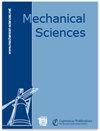基于视觉的人体上肢缝纫机器人系统
IF 1.5
4区 工程技术
Q4 ENGINEERING, MECHANICAL
引用次数: 0
摘要
摘要在人机协同缝制中,机器人跟随工人的缝制动作完成相应的缝制动作,可以提高生产效率。当机器人通过交互信息跟随工人的缝纫动作时,仍然面临着精度低的问题。为了提高机器人跟随缝制动作的精度,本文设计了一种基于视觉信息的人体上肢缝制动作跟随系统。该系统由改进的OpenPose模型、高斯混合模型(GMM)和高斯混合回归(GMR)组成。该系统采用改进的OpenPose模型对人体上肢的缝制动作进行识别,并采用标签融合方法对上肢被织物覆盖时的连接点标签进行校正。然后利用GMM对各运动元素和时间进行编码,得到高斯分量的回归功。采用GMR预测运动单元之间的连接,生成缝纫运动轨迹。最后,在协作机器人的实验平台和仿真环境中进行了实验验证和仿真。实验结果表明,在机器人运动的前2 s内,跟踪误差角可控制在0.04 rad以内。因此,可以认为缝制动作跟随系统可以实现更高的精度,在一定程度上促进了人机协作技术的发展。本文章由计算机程序翻译,如有差异,请以英文原文为准。
A vision-based robotic system following the human upper-limb sewing action
Abstract. In human–robot collaborative sewing, the robot follows the sewing action of a worker to complete the corresponding sewing action, which can enhance production efficiency. When the robot follows the sewing action of the worker through interactive information, it still faces the problem of low accuracy. In order to improve the accuracy of the robot following the sewing action, a human upper-limb sewing-action-following system based on visual information is designed in this paper. The system is composed of an improved OpenPose model, Gaussian mixture model (GMM), and Gaussian mixture regression (GMR). In the system, an improved OpenPose model is used to identify the sewing action of the human upper limb, and the label fusion method is used to correct the joint point labels when the upper limb is covered by fabric. Then the GMM is used to encode each motion element and time to obtain the regression work of the Gaussian component. GMR is adopted to predict connections between moving elements and generate sewing motion trajectories. Finally, the experimental verification and simulation are carried out in the experimental platform and simulation environment of the collaborative robot. The experimental results show that the tracking error angle can be controlled within 0.04 rad in the first 2 s of robot movement. Therefore, it can be considered that the sewing-action-following system can realize higher precision and promote the development of human–robot collaboration technology to a certain extent.
求助全文
通过发布文献求助,成功后即可免费获取论文全文。
去求助
来源期刊

Mechanical Sciences
ENGINEERING, MECHANICAL-
CiteScore
2.20
自引率
7.10%
发文量
74
审稿时长
29 weeks
期刊介绍:
The journal Mechanical Sciences (MS) is an international forum for the dissemination of original contributions in the field of theoretical and applied mechanics. Its main ambition is to provide a platform for young researchers to build up a portfolio of high-quality peer-reviewed journal articles. To this end we employ an open-access publication model with moderate page charges, aiming for fast publication and great citation opportunities. A large board of reputable editors makes this possible. The journal will also publish special issues dealing with the current state of the art and future research directions in mechanical sciences. While in-depth research articles are preferred, review articles and short communications will also be considered. We intend and believe to provide a means of publication which complements established journals in the field.
 求助内容:
求助内容: 应助结果提醒方式:
应助结果提醒方式:


